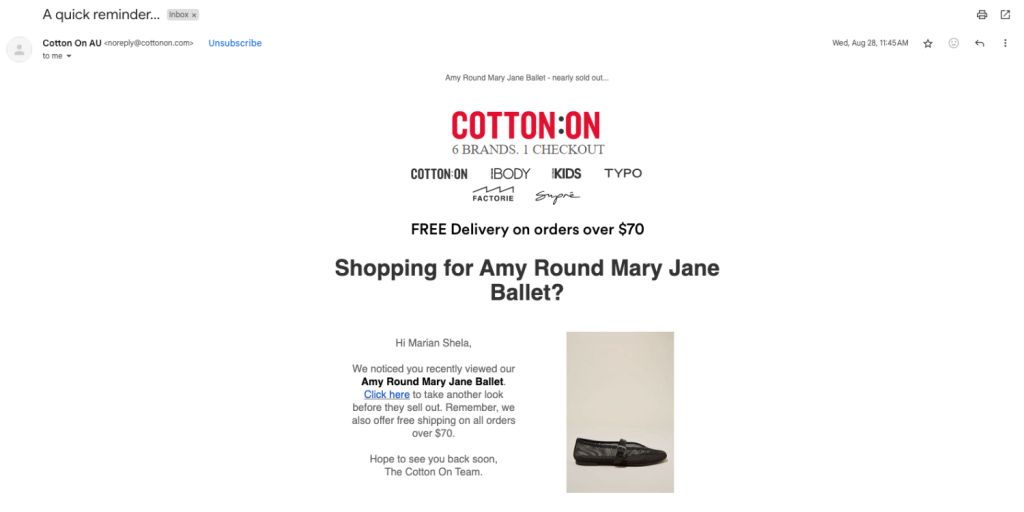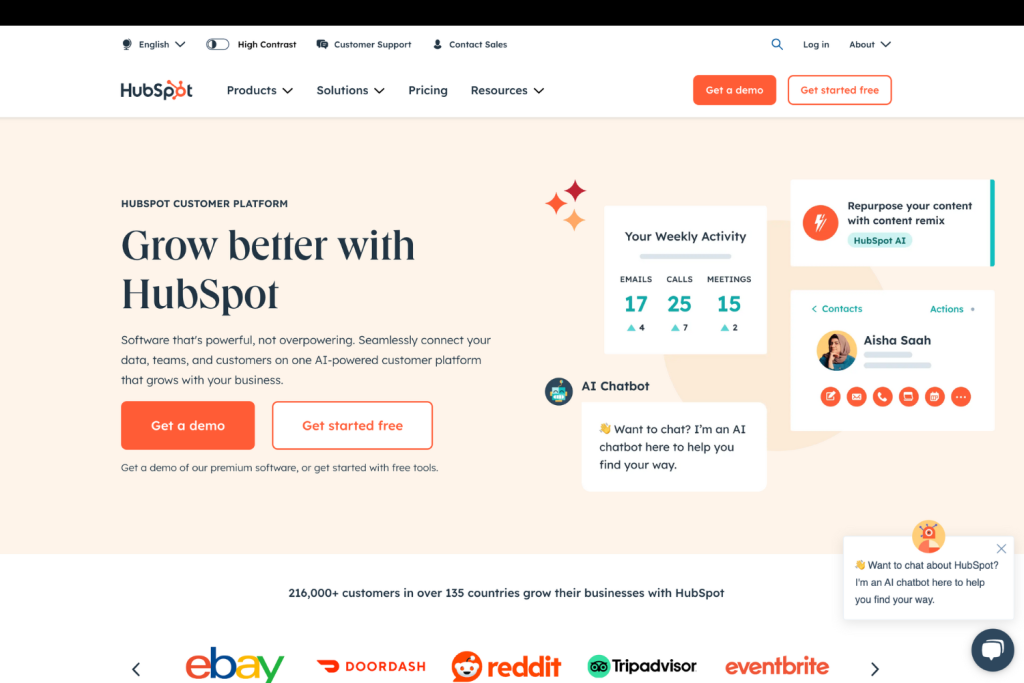The ecommerce space is becoming increasingly competitive, making it more difficult to have an edge. You can make a huge difference by personalizing and segmenting your lead nurturing emails. Reaching out to your potential customers with content that speaks directly to their needs and interests helps grab their attention easier, builds trust faster, and encourages them to take action.
In this blog, we’ll dive into effective approaches for lead nurturing, showing you how to use automation tools and marketing software to make your life easier. We’ll walk you through how you can build a well-planned lead nurturing process that can boost your conversion rates.
The Importance of Personalization in Lead Nurturing Emails
Personalizing your lead nurturing emails is all about crafting messages that speak directly to your customers’ preferences and behaviors. This might sound too broad, but it helps build trust and improve your brand. When done right, personalization can very well be your edge that makes prospective buyers choose your brand over your competitors.
Personalized emails aren’t just a nice touch like most people perceive them to be. In the world of ecommerce, personalization is a necessity. When your emails resonate with your brand and target audience, you’ll likely see higher engagement and stronger customer relationships.

With personalized lead nurturing emails, people are more likely to open and read your messages, which feel relevant. This feeling of relevance will build trust and loyalty over time, resulting in a higher conversion rate and bringing in returning customers as well.
Effective Segmentation Techniques for Targeted Campaigns
A huge part of personalization comes in segmentation. Segmentation involves categorizing your lead emails into different criteria. This helps tailor your messaging as well as makes it easier for you to implement your campaigns. Here are three main segmentation techniques to apply to your lead marketing campaigns.
Demographic Segmentation
Demographic segmentation groups your audience based on basic customer characteristics like age, gender, and location.
- Age: Tailor content to different age groups.
- Gender: Customize messages based on gender-specific preferences.
- Location: Send location-based offers and updates.
- Income Level: Offer premium plans or budget-friendly options.
Behavioral Segmentation
Behavioral segmentation focuses on how your audience interacts with your brand.
- Past Purchases: Recommend products based on previous buying behavior.
- Email Engagement: Segment by open rates and click-through rates.
- Browsing Patterns: Use website behavior to send relevant content.
- Cart Abandonment: Target those who have abandoned their carts with reminders or special discounts.
Psychographic Segmentation
Psychographic segmentation considers your audience’s interests, lifestyle choices, and values.
- Interests: Send content related to hobbies or passions.
- Lifestyle Choices: Tailor emails to fit different lifestyles, such as fitness enthusiasts or travelers.
- Values: Align your messaging with the values your audience cares about.
By applying these segmentation techniques, your lead nurturing emails will be more targeted and effective, leading to higher engagement and conversions. You can even combine these segments together.
Top tip: Think of your brand when applying your segments to your marketing campaigns. Personalization is more effective when your messaging both includes your brand voice as well as your target audience.
Crafting High-Quality Content for Lead Nurturing Emails
Crafting content that feels personal and relevant is key to nurturing leads effectively through email. Personalization goes beyond basic branding and tone—it’s about making your leads feel like you’re speaking directly to them.
Writing Engaging and Personalized Subject Lines
The subject line is your first opportunity to catch your lead’s attention. Since they are not yet your customers, a personalized approach can make a big difference. Tailor your subject lines to reflect the unique needs and behaviors of each lead, ensuring they feel directly addressed.
Here are some tips to personalize your subject lines:
- Use the recipient’s name or mention recent interactions they’ve had with your brand.
- Action-oriented phrases like “Grab Your Spot, [Name]” or “Don’t Miss Out on This Opportunity” create urgency.
- Curiosity-driven statements can pique interest and encourage opens, such as “Here’s something just for you, [Name].”
When crafting your subject lines, always align them with the specific segment of your leads. For example, avoid overly aggressive language when addressing leads who have shown low engagement.
Creating Personalized, Valuable Email Content
Once your leads open your email, the next step is delivering a personalized message that speaks to their specific interests and needs. The goal is to make them feel like the email is crafted just for them, increasing the likelihood they’ll engage with your CTA or next step.
Here’s how you can personalize your email content:
- Tailor useful information by sharing tips or insights that directly relate to the recipient’s previous behavior or expressed interests.
- Leverage customer success stories that reflect their specific challenges or industry, making the examples more relatable.
- Offer exclusive promotions personalized to their interests or past interactions with your brand.
Personalization goes hand in hand with segmentation, ensuring that the content in your email body is always relevant to the lead receiving it.
Using Visuals to Enhance Personalization
While written content is vital, incorporating personalized visuals can further increase engagement. By using images or videos that reflect your lead’s interests, location, or past interactions, you can create a more tailored experience.
Personalization tips for visuals:
- Include relevant, high-quality images that reflect the recipient’s preferences or demographic.
- Use personalized infographics to summarize information in a way that’s directly relevant to their needs.
- Incorporate dynamic videos featuring products or services that match the recipient’s previous interactions or inquiries.
These personalized elements can significantly enhance the effectiveness of your lead nurturing emails, creating a deeper connection and fostering trust with your potential customers.
Personalizing Timing for Lead Nurturing Email Campaigns
Personalization isn’t just about the content itself. The timing of your emails also plays a crucial role in how effective you are in engaging with your leads. Sending your emails at the right time (and we don’t mean literally) is just as important as crafting the right message, as it directly impacts their effectiveness.
Understanding Customer Behavior
Personalization goes beyond adding names to your email content. Your goal here is to ensure your prospects can relate and resonate with your lead nurturing emails. This is why it’s essential to understand their behavior.
In terms of email timing, the first thing you need to learn is understanding when your leads are most active. Think about when they’re most likely to open and interact with your emails. This is the best way to determine when you should be sending your emails.
Take advantage of marketing automation tools to track this behavior and optimize your send times. For example, if a particular lead tends to engage with emails in the morning, schedule your emails to arrive at that time for a higher chance of engagement. If your leads are worldwide, send the emails in their timezone.
Best Practices for Email Timing
If you are still starting or don’t have enough data about your leads, use industry benchmarks as a starting point. Ideally, send your emails mid-week (between Tuesdays and Thursdays) around mid-morning (10 AM) or early afternoon (1 PM or 2 PM).
Once you have more information about your leads, change the email timing based on your audience list’s behavior. While industry standards are helpful, you will soon realize that certain segments, like busy people, may prefer checking their emails once they’re at home.
How to personalize timing for different lead segments:
- Test Send Times: Run A/B tests with different time slots to see what works best for each segment.
- Segment by Behavior: Adjust email timing for different segments, ensuring you send emails when each group is most likely to engage.
- Monitor Performance: Use analytics to fine-tune your strategy and improve results for each lead type.
Frequency of Emails
Unfortunately, the amount and frequency of emails you send your audience is often overlooked. The balance between staying top-of-mind and overwhelming your audience is delicate and critical. Sending too many emails can result in unsubscribes, while too few may cause your leads to lose interest. Personalize the frequency of your emails based on the engagement level of each segment.
How to personalize email frequency:
- Start with a Moderate Approach: Tailor frequency based on how each segment responds—more engaged leads might appreciate regular updates, while less engaged leads may prefer fewer emails.
- Segment by Engagement Level: Send frequent updates to highly engaged subscribers, while offering fewer but more targeted messages to those who interact less.
- Monitor Engagement: Track metrics like open rates, click-through rates, and unsubscribe rates to adjust frequency accordingly.
Strategies for Continuous Improvement
Like with any other marketing approach, personalizing your lead nurturing emails is an ongoing process. Continuously refining your strategy ensures your lead nurturing emails remain relevant, engaging, and effective.
A/B Testing for Content and Timing
To understand what resonates best with your audience, always leverage A/B testing. Test different subject lines, email layouts, email content, content type, and send times. Your goal is to understand the most effective combinations for different segments of your audience.
Examples of A/B testing personalization:
- Subject Lines: Experiment with personalized subject lines that include names, interests, or past interactions.
- Email Layouts: Try out different designs and CTAs tailored to specific segments.
- Send Times: Test various days and times to uncover optimal engagement windows for each group.
Analyzing Metrics for Personalized Insights
Regularly monitor key metrics to track the performance of your email campaigns. Personalized insights can be gathered through tools like HubSpot, Mailchimp, or Google Analytics. These tools allow you to analyze how your audience engages with your emails based on their individual behaviors.

Track key metrics effortlessly with HubSpot’s powerful monitoring tools.
Key metrics to monitor for personalization:
- Open Rates: How many recipients open emails at different times of the day.
- Click-Through Rates: Which segments respond best to specific content and CTAs.
- Conversions: Track how personalized emails lead to the completion of desired actions, such as purchases or sign-ups.
Adjusting Strategies Based on Personalized Feedback
At this point, you should have some relevant data about your leads. As part of continuously improving your lead nurturing emails, you should use your data together with customer feedback. You need to be attentive to how different segments interact with your emails. Adjust your strategies accordingly.
How to personalize based on feedback:
- Customer Feedback: Gather insights through surveys, live chats, or direct responses, then adjust your email content and timing to reflect their preferences.
- Data Analysis: Use automation tools to identify trends and patterns specific to different segments.
- Strategic Adjustments: Make data-driven changes to improve how your emails resonate with various leads, ensuring they feel catered to on a personal level.
Final Thoughts
When it comes to lead nurturing in ecommerce, personalizing and segmenting your emails is critical. Doing so can create more meaningful connections with your potential customers, leading to increased engagement, higher conversions, and increased loyal customers. Follow our tips and advice to get the most out of your marketing efforts.








